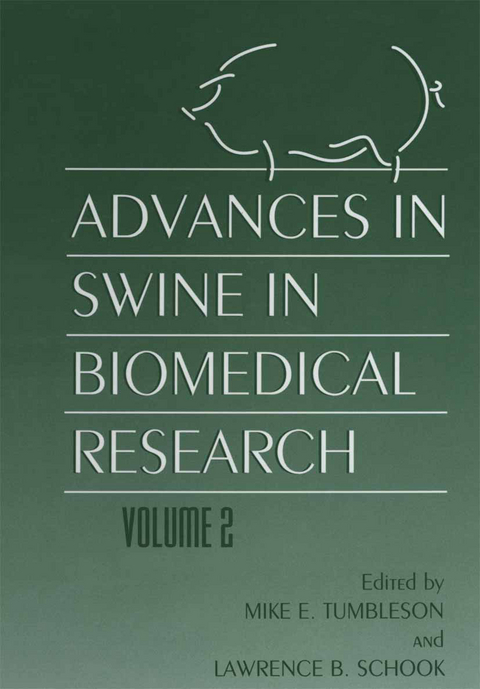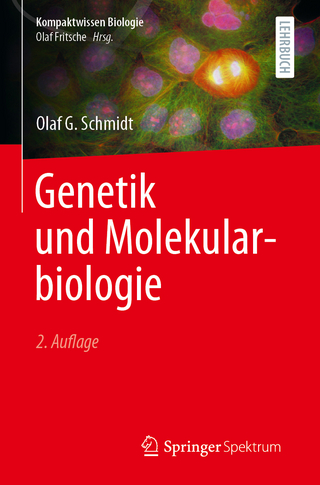
Advances in Swine in Biomedical Research
Springer-Verlag New York Inc.
978-1-4613-7699-6 (ISBN)
Methods and Techniques.- 37. Swine Research Breeds, Methods, and Biomedical Models.- 38. The Pig as a Model for Cutaneous Pharmacology and Toxicology Research.- 39. An in vitro Pig Skin Model for Predicting Human Skin Penetration and Irritation Potential.- 40. Swine Liver Usage in Extracorporeal Detoxification.- 41. Pig Behavior and Biomedical Research: Suitable Subjects and Experimental Models.- 42. Current Status of in vitro Production of Porcine Embryos.- 43. Reproductive Physiology in Chinese Meishan Pigs: A University of Illinois Perspective.- 44. Selection for Extremes in Serum FSH Concentrations Results in Reduced Testis Size and Fertility in Meishan and White Composite Boars.- 45. Reproductive Characteristics in Sinclair Miniature Swine.- 46. A Comparison of Physiological and Biochemical Parameters in Fully Conscious Hormel-Hanford and Yucatan Strains of Miniature Pig.- 47. Biochemical Indices of Stress Associated with Short-Term Restraint in Hormel and Yucatan Miniature Swine.- 48. The Minipig as a Model for the Study of Aging in Humans: Selective Responses of Hormones Involved in Carbohydrate and Lipid Metabolism in Different Sexes.- 49. Aging and Miniature Swine Heart and Liver Plasma Membranes.- 50. Comparing Porcine Models of Coronary Restenosis.- 51. Sinclair Miniature Swine Melanoma as a Model for Evaluating Novel Lymphography Contrast Agents.- 52. The Yucatan Miniature Pig Model of Ventricular Septal Defect.- 53. An External Thoracic Duct Venous Shunt to Allow for Long Term Collection of Lymph and Blood in the Conscious Pig.- 54. Pregnant Yucatan Miniature Swine as a Model for Investigating Fetal Drug Therapy.- 55. A Swine Model for Determining the Bioavailability of Lead From Contaminated Media.- 56. Evaluation of Sinclair Miniature Swine as an Osteopenia Model.- 57. Neovascularization of the Ischemic Myocardium by Cardiomyoplasty: Its Study Using the Casting Method and Selective Acute Myocardial Infarction in Swine.- 58. Vaccination Study with the Sinclair Miniature Swine-Effect of Vaccine Dose and Litter.- 59. Early Characterization of Panepinto Micro/Miniature Swine for Use as Transgenic Animal Models.- 60. Miniature Swine Breeds Used Worldwide in Research.- 61. The Siberian Miniature Pig, Its Development, Genetics, and Use in Biomedical Research.- Nutrition.- 62. Pigs as Models for Nutrient Functional Interaction.- 63. A Piglet Model for Neonatal Amino Acid Metabolism during Total Parenteral Nutrition.- 64. The Neonatal Piglet as a Model to Study Insulin Like Growth Factor Mediated Intestinal Growth and Function.- 65. The Perinatal Pig in Pediatric Gastroenterology.- 66. Prenatal and Perinatal Development of Intestinal Transport and Brush Border Hydrolases in Pigs.- 67. Changes in Pig Intestinal Structure and Functions and Resident Microbiota Induced by Acute Secretory Diarrhea.- 68. Helicobacter Pylori Infection in Gnotobiotic Piglets: A Model of Human Gastric Bacterial Disease.- 69. An Experimental Rotaviral Enteritis Model with Neonatal Pigs.- 70. Influence of Dietary Protein and Fat Sources on the Levels of Blood Homocysteine in a Pig Model: Preliminary Observations.- 71. Lung Eicosanoid Production in Neonatal Pigs Fed Formula Supplemented with N-3 and N-6 Fatty Acids.- 72. Genetically Diverse Pig Models in Nutrition Research Related to Lipoprotein and Cholesterol Metabolism.- 73. Glucose and Fatty Acid Metabolism in the Newborn Pig.- Author Index.
| Zusatzinfo | XVIII, 483 p. |
|---|---|
| Verlagsort | New York, NY |
| Sprache | englisch |
| Maße | 170 x 244 mm |
| Themenwelt | Medizin / Pharmazie ► Gesundheitsfachberufe ► Diätassistenz / Ernährungsberatung |
| Medizin / Pharmazie ► Medizinische Fachgebiete ► Biomedizin | |
| Medizin / Pharmazie ► Medizinische Fachgebiete ► Pharmakologie / Pharmakotherapie | |
| Studium ► 2. Studienabschnitt (Klinik) ► Humangenetik | |
| Studium ► Querschnittsbereiche ► Infektiologie / Immunologie | |
| Naturwissenschaften ► Biologie ► Biochemie | |
| Naturwissenschaften ► Biologie ► Zoologie | |
| Naturwissenschaften ► Physik / Astronomie ► Angewandte Physik | |
| ISBN-10 | 1-4613-7699-8 / 1461376998 |
| ISBN-13 | 978-1-4613-7699-6 / 9781461376996 |
| Zustand | Neuware |
| Haben Sie eine Frage zum Produkt? |
aus dem Bereich


